Free Pub: "Distinguishing Asian Giant Hornet Damage to Honey Bee Colonies"
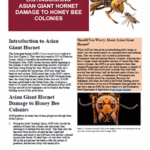 Dr. Kelly Kulhanek (formerly of UMD!) and Dr. Brandon Hopkins of Washington State University have prepared a free, downloadable publication about Asian Hornet damage to honey bee colonies. The publication includes a quick and helpful overview of hornet behavior and its impact on European honey bees, as well as guidance about why most beekeepers IN WASHINGTON EVEN do not need to be concerned. There are photos of other kinds of damage, including from pygmy shrews, that we do have here, as well as further reading for those who want to learn more about this VERY FAR AWAY invasive pest. [More info]
Dr. Kelly Kulhanek (formerly of UMD!) and Dr. Brandon Hopkins of Washington State University have prepared a free, downloadable publication about Asian Hornet damage to honey bee colonies. The publication includes a quick and helpful overview of hornet behavior and its impact on European honey bees, as well as guidance about why most beekeepers IN WASHINGTON EVEN do not need to be concerned. There are photos of other kinds of damage, including from pygmy shrews, that we do have here, as well as further reading for those who want to learn more about this VERY FAR AWAY invasive pest. [More info]
Dr. Samuel Ramsey to Set Up, Lead Lab at University of Colorado/Boulder
 On June 1, Dr. Samuel Ramsey announced that the University of Colorado at Boulder has offered him the opportunity to build his own lab, with research taking place both in the US and Thailand! Officially, he is the brand new Marvin H. Carruthers Endowed Chair for Early-Career Faculty: Assistant Professor of Entomology for the BioFrontiers Institute and the Department of Ecology and Evolutionary Biology.
On June 1, Dr. Samuel Ramsey announced that the University of Colorado at Boulder has offered him the opportunity to build his own lab, with research taking place both in the US and Thailand! Officially, he is the brand new Marvin H. Carruthers Endowed Chair for Early-Career Faculty: Assistant Professor of Entomology for the BioFrontiers Institute and the Department of Ecology and Evolutionary Biology.
Most of us are familiar with Dr. Ramsey through his groundbreaking work on Varroa biology, and his Ph.D. work with the vanEngelsdorp Lab at the University of Maryland. He has been a charismatic educator and even entertainer of our community, and has recently received even wider attention on national and international media outlets.
You can keep up with his continuing accomplishments and adventures through both The Ramsey Research Foundation and Dr. Sammy websites, in addition to his work at UC Boulder.
The Dose Makes the Poison: feeding Apis mellifera, with probiotics and b-vitamins
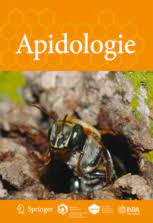 It matters what you feed your bees, and we are advised to watch the dose. More is not more.
It matters what you feed your bees, and we are advised to watch the dose. More is not more.
An open access April 2022 study published in Apidologie and led by Andrew Brown of the University of Bern looked at the gut health and longevity of bees who receive feeding with probiotics and vitamins. Not surprisingly, the study found that both the chosen food and the dose had an impact on the weight and longevity of the bees.
The study used newly emerged bees which had been treated with Tetracycline, and fed them one of several diets: sucrose (sugar water, like we would give them) only, sugar water and pollen, probiotics at different doses, probiotics and pollen (low and high doses), or b-vitamins. They also had control "Frame" bees who did not receive the antibiotics but were tested with the different feeding regimes.
Honey bees who received unlimited access to pollen achieved the highest body weights, especially those who received sugar water and pollen. Researchers believe that the pollen plays an important role in "inoculating" the bees' digestive systems with beneficial flora. However, the longest lived bees were those (both in the treated and control groups!) received a low level probiotic and pollen. Higher doses of probiotics and b-vitamins reduced lifespans.
Nosema control without Fumagilin? Study looks at biocontrols
An April 2022 open access study led by Prof. Massimo Iorizzo of the Università degli Studi del Molise in the Journal of Fungi looks at options for biocontrols for Nosema disease in honey bees. Beekeepers have relied for some time on Fumagilin for control of Nosema apis, but have not been pleased with effectiveness, acceptance by the bees, toxicity or antibiotic exposure of comb and hive components. As Nosema ceranae has become predominant, Fumagilin has been even less effective.
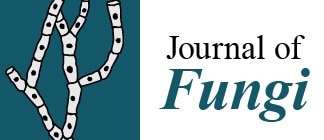
Numerous studies have shown that plant extracts, RNA interference (RNAi) and beneficial microbes could provide viable non-antibiotic alternatives. In this article, recent scientific advances in the biocontrol of nosemosis are summarized.
The scientists looked at plant extracts, beneficial microbes, and RNAi treatments. They found that the antimicrobial effects of plant extracts offered promise, but were likely linked to the gut biology of the bees. RNAi methods are still emerging, and not enough is known for practical application. They conclude that "the use of appropriate probiotics, unlike synthetic or natural chemical compounds, does not adversely affect the balance of the gut microbiota and is also a technique that can help prevent and treat nosemosis as well as positively impact honey bee welfare."
Variant of Deformed Wing Virus threatens honey bees worldwide
 On June 1, Science Daily reported that researchers led by Dr. Robert Paxton at Martin-Luther-Universität Halle-Wittenberg have determined that a new viral variant of Deformed Wing Virus (DWV-B) has replaced the already formidable DWV-A strain in Europe and is rapidly spreading, apparently causing the collapse of at least some affected colonies. The team analyzed data collected over the past 20 years, evaluating roughly 3,000 datasets for honeybees, large earth bumblebees and Varroa mites from the database NCBI. The datasets contain clues about the genetic material of the viruses. They also investigated the first scientifically documented references to the "DWV-B" variant for numerous countries. "Our analyses show that the new variant has already gained a foothold in Europe and that it will only be a matter of time before it is the dominant form around the world," says Paxton.
On June 1, Science Daily reported that researchers led by Dr. Robert Paxton at Martin-Luther-Universität Halle-Wittenberg have determined that a new viral variant of Deformed Wing Virus (DWV-B) has replaced the already formidable DWV-A strain in Europe and is rapidly spreading, apparently causing the collapse of at least some affected colonies. The team analyzed data collected over the past 20 years, evaluating roughly 3,000 datasets for honeybees, large earth bumblebees and Varroa mites from the database NCBI. The datasets contain clues about the genetic material of the viruses. They also investigated the first scientifically documented references to the "DWV-B" variant for numerous countries. "Our analyses show that the new variant has already gained a foothold in Europe and that it will only be a matter of time before it is the dominant form around the world," says Paxton.
The original strain of the virus ("DWV-A") was discovered in Japan in the early 1980s and the new variant "DWV-B" was first identified in the Netherlands in 2001. "Our laboratory studies have shown that the new variant kills bees faster and is more easily transmitted," says Paxton.
Because DWV is vectored by varroa mites, it appears that it's spread has occurred more slowly in regions, such as Australia, where varroa are less widespread. Study link.
Some Bats Get A Buzz On
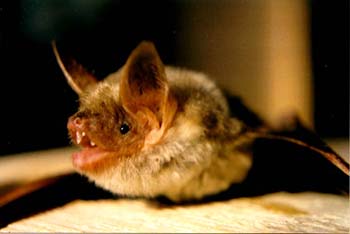
The May 9 issue of Current Biology includes an article by Italian researchers who have revealed what may be the first known case of a mammal mimicking the sound of an insect, in this case to deter predators. The greater mouse-eared bat (Myotis myotis) broadcasts, when handled, distress calls that imitate the sounds of stinging bees or wasps to discourage the bat’s avian predators.
The researchers noticed the unusual sounds when detangling bats they had collected from mist nets: when held in scientists' hands, the bats made a buzzing sound. Danilo Russo of the Università degli Studi di Napoli Federico II said, "When you hear them, that's what comes to your mind immediately."
The scientists later tested this idea, considering that it might be an instance of "Batesian mimicry," a known behavior when a harmless species visually, acoustically, or chemically attempts to disguise itself as one which is distasteful to predators.
The researchers collected and compared recordings of hymenopterans and bats, and found they could easily distinguish the sounds. When altering their analysis to comparison of the sounds in the wavelengths heard by the bats' predators, however, the sounds became more difficult to tell apart! They played the sounds back to captive birds from predator species, which then moved away from the sounds.
Honey Bees can be trained to identify SARS-CoV-2 infected samples
The April 2022 edition of Biology Open includes an article by a team in the Netherlands which has determined that honeybees may be able to provide an alternative method for detecting novel, zoonotic viral diseases in both humans and animals. Such pathologies lead to detectable changes in the volatile organic compound (VOC) profile of animals, which can be monitored, thus allowing the development of a rapid VOC-based test. In the current study, the team successfully trained honeybees (Apis mellifera) to identify SARS-CoV-2 infected minks (Neovison vison) using Pavlovian conditioning protocols.
They tested two protocols to evaluate bees' performance, and designed a non-invasive rapid test in which multiple bees were tested in parallel on the same samples. This provided reliable results regarding a subject's health status. Using the data from the training experiments, researchers then simulated a diagnostic evaluation trial to predict the potential efficacy of our diagnostic test, which yielded a diagnostic sensitivity of 92% and specificity of 86%. The team hopes that a honeybee-based diagnostic can offer a reliable and rapid test that provides a readily available, low-input addition to the currently available testing methods. A honeybee-based diagnostic test might be particularly relevant for remote and developing communities that lack the resources and infrastructure required for mainstream testing methods.
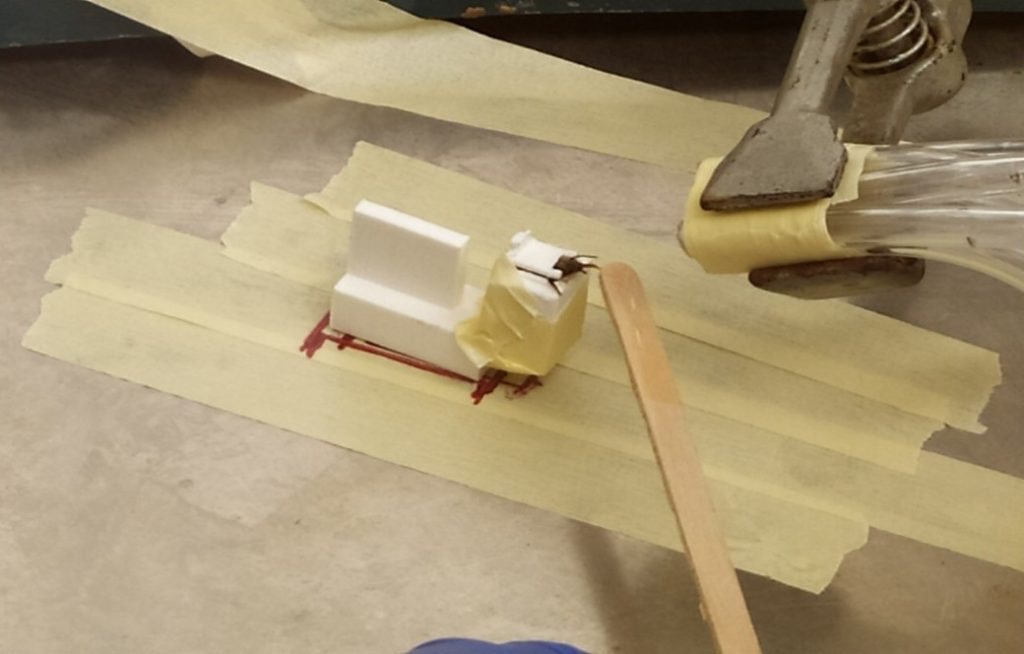
[Return to June 2022 BeeLine newsletter]

